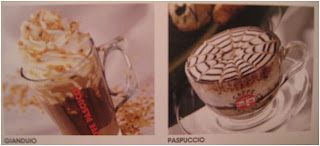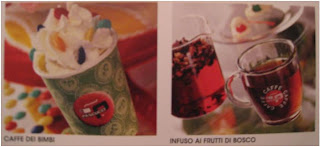www.foragesf.com
Visit date: January 15
Forage seems to be THE activity these days.
Chef Rene Redzepi in Copenhagen, Denmark popularized foraging as of late to prove that his town and its surroundings is not all lost to the unstable and ever-changing weather. His restaurant
Noma now holds the title of 2011 Best Restaurant in the World according to
www.theworlds50best.com.
While Chef Redzepi forages in Copenhagen, I found ForageSF to show me the ropes. They offer mushroom-finding trips either in northwest Sonoma County or Oakland during peak season, usually December and January. (Season started earlier this year in November with the early rains.)
I learned a lot of cool things. Below are some of my notes during the trip…
– Salt Point is wet and damp which means more varieties of mushrooms. It's the only place open to the public with a limit of five pounds per person per day to prevent commercial collection. According to the instructor, the mushrooms are here as a gift to us. They are waiting to be picked and placed in loose-weave baskets so the tiny spores can leak through the holes of our baskets onto the ground for more growth. The rules are pictured below but the basic gist is to not make a mess for other pickers (especially Russulas, see below) and to be sensitive, watching where we step.
– Growth rate varies from overnight to a month to next season to 100 years (i.e. shelf mushrooms).
– The fruit grows out of mycelium, with different habitats resulting in different growth rates.
– Micorisal – only grow with root of host tree/plant, each helps the other grow. Mycelium is in the root.
– Treat each species as its own, some are safe but some are not. Key characteristic to look out for is texture – gills? stringy? smooth stalk? etc. Some species look so similar and are identifiable only through
"spore print" process to reveal their color. Sometimes gills already reveal their color (i.e. portobello is black).
– Don't eat death caps, poisonous! They are part of the Amanita species, appear plain, grayish-white-tints of blue, looks harmless.
On the other hand, Amanita Muscaria is edible. They are red with white dots (very bright, looks like the Mario Bros. mushroom or Alice in Wonderland). The effects are psychedelic (i.e. making you feel 50 feet tall) and blurred vision, hence the "poisonous" effect. Used by Siberian shamans for medicinal purpose. To eat without side effects, boil, discard water (which has all the active ingredients), sautee.
– Little brown mushrooms are extremeley hard to distinguish, not even the experts can do it easily. Don't mess with them at all because they can be toxic.
– Don't ever eat raw. This concept is perpetuated by button mushrooms (which are mini portobellos) in salads. According to many experts, portobellos are actually carcinogenic, making them not much better as an alternative for vegetarians.
–
David Arora is one of the leading mushroom experts, especially those the West coast being a California native.
–
Paul Stamets – micoremediation – repair soil by growing mushroom because of underground mycelium acting as a sort of "underground internet" delivering needed nutrients
 |
| Russula |
 |
| very old, rotting Russula |
Russulas are the most common and mostly inedible. They won’t kill a person, but will cause bad side effects. Some are edible like the Candy cap (see my basket below). Overall, no one really knows how to cook them to be edible.
Common characteristics: white (some red), white gills and spores, naked, no scales, no rings, bleeds milk, stalk will snap like chalk when broken (more bendable when older). The test is to throw Russulas against trees/rock/ground and the mushrooms will shatter.
 |
rules |
 |
| Shelf mushrooms |
Shelf mushrooms – are micorisal, grows on tree; no gills, instead have pores; very firm in touch. Mycelium is inside the tree. Have some medicinal purpose. This particular one is about 2 seasons growth in size.
 |
| Black trumpet/chanterelles |
Chanterelles can be rot free for months (maybe anti-microbial too when eating), like to grow around tan oak trees.
 |
| Pig ear |
 |
| Pig ear |
 |
| Pig ear |
Pig ears are edible but typically not eaten because they don't have much flavor. They are the easiest to spot because of their size.
 |
This is the instructor’s basket – many are inedible, but will be used to teach his students tomorrow |
 |
| my basket |
My basket clockwise starting at top left corner:
Pig ear (edible), Candy cap (orange, edible), Black trumpet/chanterelle (edible), regular Chanterelle (edible, one of two found today), unknown round porous mushroom, white quarter size (too young to tell), Witches butter (orange, jelly texture, edible), Yellow foot chanterelle (edible), Coral (white stringy looking, inedible), Hedgehog (light brown in the middle, edible).
Candy caps are edible russulas. They smell like maple syrup or butterscotch, bleed white, and have a hollow stalk. The instructor suggested I dry them in my car to be used as natural air freshener.
Black chanterelles are the hardest to see, of course, because of their color. But once we find one and know what we are looking for, they are pretty easy see.
Also, there was one couple that found the only Matsutake of the day, a bit old but still edible. The size was probably as big as the old rotting Russula I found.
We all take our finds home at the end of the day. Next step is to cook them and see how they taste. Too bad I forgot to bring the travel burner and pan to cook them on the spot.
See additional post:
Cooking Foraged Mushrooms
 |
first hour of our two-hour drive back |

























































